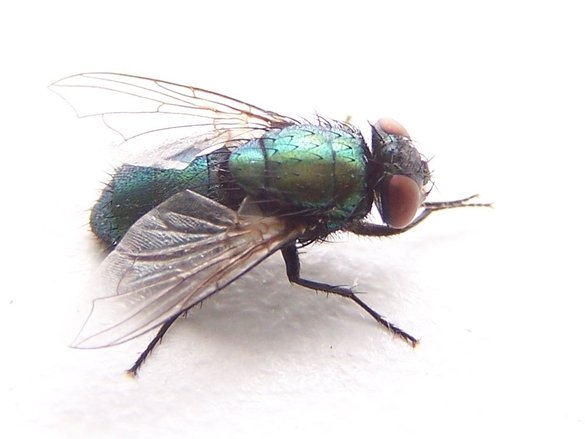
You can report cases of blowfly using Elanco's Strike Tracker at www.farmanimalhealth.co.uk
Perfect Blowfly Conditions Imminent As More Cases Reported
Balmy temperatures and wet spells in recent weeks are set to offer the ideal conditions for blowflies to thrive, as new cases of strike are reported across the country, including Devon, Hampshire, Sussex and Wales.
Met Office forecasters have predicted sunny weather for June, followed by more unsettled conditions later in the month, with rain and showers across the UK - this will give blowfly larvae the perfect climate to hatch and adult flies to lay eggs over the coming weeks.
The timing and severity of blowfly strike is a direct consequence of local weather patterns, so farmers need to be constantly aware of the ever-changing seasonal conditions. Sheep farmers are being urged to ‘strike first’ against blowfly to avoid being caught out.
A recent survey by Elanco Animal Health found that 94 per cent of sheep farmers have been caught out by blowfly strike in the past, with one in five (20 per cent) suffering financial losses greater than £500 as a result.
Studies of recent climate data have shown a huge variation in temperature, humidity and rainfall year-to-year with 2007, 2011 and 2014 seeing the three mildest springs on record since 1910. More than one in three (41 per cent) sheep farmers have noticed blowfly strike happening earlier in the year, the Elanco survey also found4.
Temperatures of 9ºC or higher determine when overwintering blowfly larvae hatch. Once they have hatched, high temperatures plus humidity create a microclimate in sheep fleece, which attracts adult flies to lay eggs. Any prolonged periods of rainfall can contribute to excessive faecal soiling, such as in cases of diarrhoea and situations of fleece rot. Both these conditions make the fleece attractive to blowflies.
Fiona Anderson, Technical Consultant Manager at Elanco Animal Health, said increasingly unpredictable weather is one of the factors behind the variation in the blowfly season, making preventative measures even more important.
Fiona said: “Prevention is always best in the case of blowfly strike because it can establish very quickly if conditions are right. Farmers have so many demands on their time it can be easy to miss an affected sheep. An infestation can be easily prevented through the use of products which contain insect growth regulators (IGRs) such as CLiK® and CLiKZiN®. These inhibit the development of the damaging second and third-stage maggots, which are responsible for causing fly strike and stock damage.
“It’s crucial we do not get complacent when it comes to blowfly – the costs of inaction can be devastating,” Fiona added.
The call comes as Elanco Animal Health launches its ‘Strike First’ campaign, which includes a survey of farmers to assess attitudes to blowfly strike, and also sees the return of Elanco’s blowfly strike tracker. The tracker is designed to allow farmers to report and monitor which counties cases of strike have already been reported in so they can be prepared. The strike tracker is available at www.farmanimalhealth.co.uk
Elanco Animal Health will be offering a range of support materials to specialist retailers and farmers to encourage discussion and preventative action on blowfly.
For more information on how you can prevent blowfly strike, visit www.farmanimalhealth.co.uk
More from Elanco
- ACT Against Lungworm for National Dog Day on 26th August!
- New Elanco survey data for national pet month
- New research reveals over a third of dogs with Angiostrongylus vasorum could be symptomless
- Chance to win with Elanco
- Elanco completes parasiticide portfolio expansion with launch of new CredelioTM Plus, offering vets a parasite treatment for every lifestyle

 8 years ago
8 years ago  1345 views
1345 views
 2 days ago
2 days ago